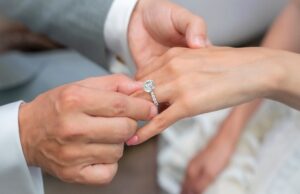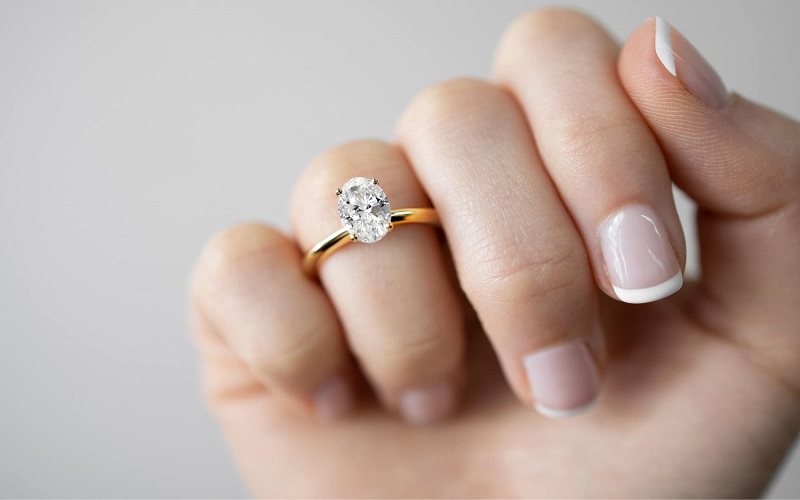An engagement ring is a piece of jewelry that is given as a symbol of commitment . These days, this piece is often a solitaire (i.e. a ring adorned with a center stone). This one can be worked in different ways: with a pavé of diamonds around the center stone, on the ring, or both, for that matter. In the end, the symbol always remains the same: a jewel offered out of love .
social circles or religions: whether in Ancient Rome where the he was offered a chiseled gold ring to his future bride, in the Middle Ages with the first jewels adorned with gems or even in the 20th century with the advent of the center diamond.
We distinguish the engagement ring from the alliance , which generally takes the form of a round ring, in precious metal, sometimes paved with precious stones. The pure, circular shape of the wedding ring symbolizes the eternal union between two people who love each other. It is traditionally offered on the wedding day.
Traditionally, both the wedding band and the engagement ring are worn on the left ring finger . The legend says that these jewels symbols of love are worn on this finger because it would be directly connected to the heart by a vein.
We read a lot about the order to be respected between the two rings: the engagement ring first, because it would have chronological priority, or the wedding ring first, to keep it closer to the heart… Our surveys and our experiences simply show that there are no rules, and that depending on the designs, comfort and desires, you can decide to place the wedding band in front or behind the engagement ring on the ring finger, without being afraid of making a mistake!
If the two jewels chosen do not allow them to be worn on the same finger (for example if the engagement ring has an imposing center stone), it is customary for the wedding ring to remain on the left hand and for the engagement ring however, switches to the right ring finger .
If your fiancée is very sensitive to wearing her two jewels on the same finger , you will have to be careful to choose an engagement ring that allows it: in general, it is better to choose a straight ring and a center stone that is not too voluminous, or else raised enough in its basket to pass over the alliance. If in doubt, simply give us a call on 01 42 46 90 89 or make an appointment in one of our stores to be guided step by step on this type of constraint.
What is a “carat”? Is the carat of a stone the same as the carat of gold?
Gold 750 thousandths (750 ‰) and 18 carats (18 cts) are the two terminologies accepted to designate the same thing: the precious metal of choice used in jewellery.
Indeed, contrary to what one might think, we do not use pure gold (also called 24 carats) in jewelry because it would be too soft to be worked properly.
Thus, gold 750 thousandths – or 18 cts – designates a mixture of 75% fine gold (pure gold therefore) and 25% other metals such as silver and copper which will harden the alloy. . It is this proportion (what is called the “title” in technical language) which gives its name to 750 thousandths gold.
There are also other materials used in jewelry: 14 carat gold and 9 carat gold. These feature a lower proportion of pure gold in the alloy: 37% in the case of 9 karat gold and 58.5% in the case of 14 karat gold. Less expensive, their behavior is however less good in time. This explains why 18 ct gold strikes the perfect balance between strength and hardness and has made it the reference metal in jewelery for decades.
The system of carats or karats (both spellings are possible) was invented in the 14th century to simplify the use of gold in trade.
For stones, we also use the term carat… it is however necessary to distinguish between the two notions. Indeed, “carat” is used as a unit of mass for gemstones. For a diamond, we will say for example that it “weighs” or “is” 1 carat: it is quite simply its weight. A carat is worth exactly 0.2 grams these days – this used to correspond to the weight of a carob tree seed, which had the reputation of having a weight that varied little from one seed to another… hence the term “ carats!


